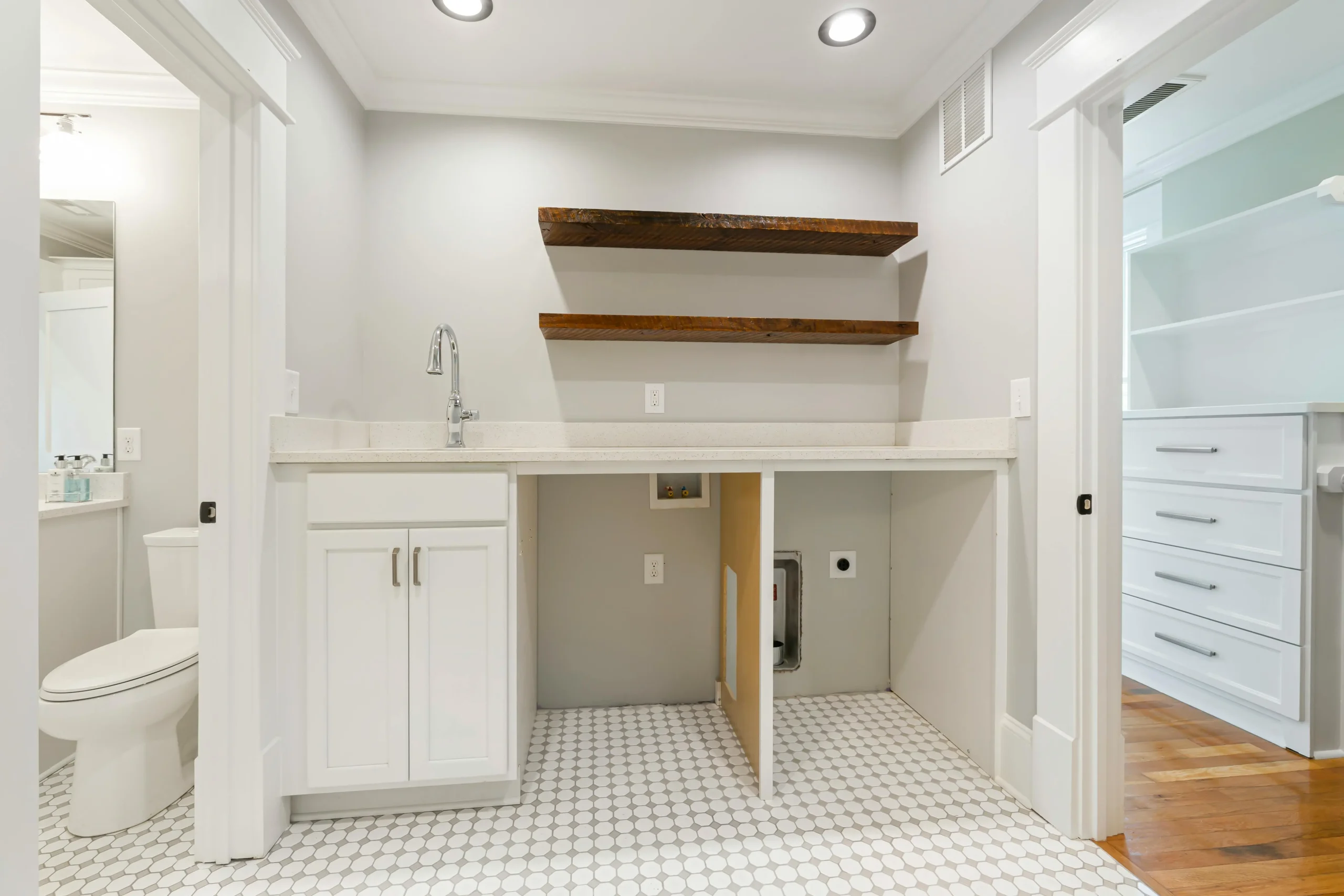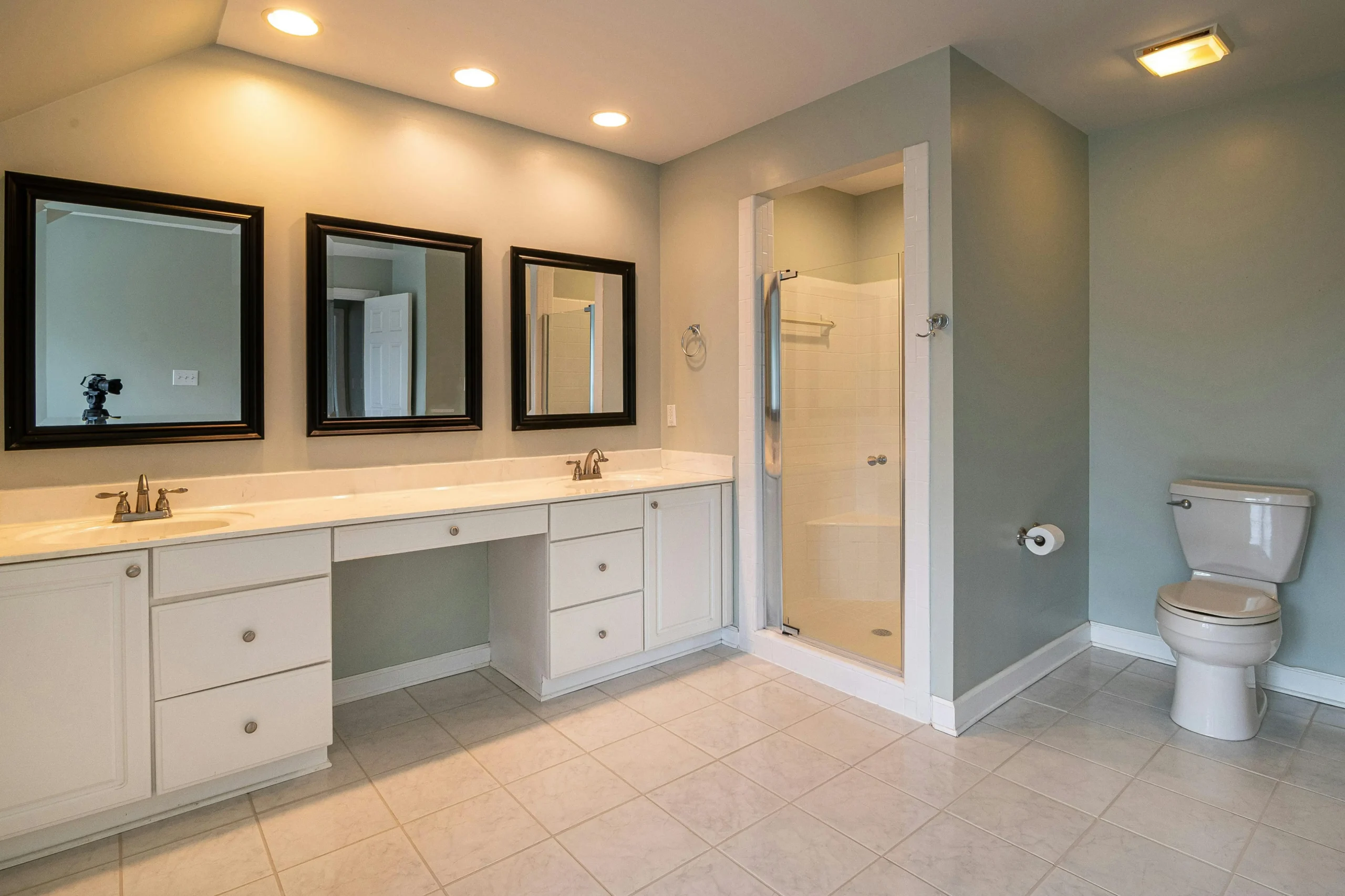Breaking Down Cleveland Heights Kitchen Remodel Costs
Planning a kitchen remodel in Cleveland Heights requires a clear understanding of all the cost components involved. The total expense is determined by a combination of factors, including the scale of the project, the materials selected, labor rates, and any structural or design modifications. Every stage—from demolition and removal of existing fixtures to new installations and finishing touches—adds to the overall cost. Hidden expenses such as permit fees, unexpected repairs, or upgrades to outdated systems can further influence the budget. By dissecting each element, you can create a detailed cost breakdown that highlights where your money is being spent, helping you to allocate funds more efficiently. Researching local pricing trends and obtaining multiple estimates from reliable contractors is essential to set realistic expectations. With a comprehensive cost analysis in place, you can confidently plan your remodel and make informed decisions throughout the renovation process.
Factors Influencing Remodeling Costs
Several key factors contribute to the overall cost of a kitchen remodel in Cleveland Heights. The first is the scope of your project, which might range from simple cosmetic updates to a complete overhaul that involves structural changes. Material quality and selection also play a crucial role; high-end finishes and custom solutions naturally command higher prices than standard options. Additionally, the condition of your current kitchen—including any necessary updates to plumbing, wiring, or structural elements—can significantly affect costs. Labor expenses are another critical factor, as local contractor rates and the complexity of installation impact your budget. Other elements, such as design complexity, local permit fees, and potential unforeseen issues like water damage or outdated infrastructure, further influence the total investment. Understanding these variables early on allows you to prioritize spending and create a more accurate budget. With these insights, you can better anticipate challenges and plan accordingly, ensuring that your project stays on track both financially and timeline-wise.
Material Costs for Major Kitchen Renovations
Material costs typically form one of the largest portions of your kitchen remodel budget in Cleveland Heights. Premium materials—such as natural stone countertops, custom cabinetry, and high-quality flooring—offer durability and an elevated aesthetic, but they come at a higher price. On the other hand, more cost-effective materials like laminate countertops or stock cabinetry can help keep expenses lower while still providing a fresh, modern look. The choice of material not only impacts the upfront cost but also affects long-term maintenance and overall longevity of your remodel. It’s important to consider factors like durability, ease of cleaning, and compatibility with your design theme when selecting materials. Requesting samples and obtaining quotes from multiple suppliers will enable you to compare quality and pricing effectively. A strategic approach to material selection helps ensure that you achieve a balance between high-end aesthetics and budget constraints. Ultimately, the materials you choose play a critical role in both the appearance and functionality of your newly remodeled kitchen.
Cleveland Heights Labor Costs for Kitchen Remodels
Labor costs are a crucial element of your kitchen remodel budget in Cleveland Heights and can vary widely depending on the complexity of the project. Skilled professionals—such as carpenters, electricians, plumbers, and tile installers—bring the expertise required to execute each phase of the remodel with precision. Labor rates in the local area are influenced by factors such as the contractor’s experience, market demand, and the scope of work. More intricate projects that involve custom installations, detailed craftsmanship, or structural modifications typically require more time and higher labor costs. It’s essential to obtain detailed, itemized estimates from multiple contractors to ensure you are paying a fair market rate and to avoid unexpected charges. Clear communication about project timelines and potential challenges will help keep labor costs under control and minimize delays. By planning carefully and selecting experienced professionals, you can ensure that your kitchen remodel is completed efficiently and to a high standard. The quality of workmanship directly influences the durability and aesthetic outcome of your remodel, making labor a significant investment in your project.
Kitchen Remodel Cost Guide for Beginners
For those new to kitchen remodeling in Cleveland Heights, a step-by-step cost guide is invaluable for understanding the financial landscape of your project. Start by dividing the remodel into distinct phases: initial design and planning, demolition, construction, installation, and final touches. Each phase comes with its own set of costs that add up to your overall budget. Research local pricing trends and consult with several contractors to gather realistic estimates for each component. It’s also important to create a checklist of “must-haves” versus “nice-to-haves” so you can prioritize spending on the most impactful upgrades. Learning from previous remodeling projects—whether through online resources or personal recommendations—can offer practical insights into managing costs effectively. By following a structured cost guide, you can avoid common pitfalls and unexpected expenses. This methodical approach will empower you to confidently plan your remodel and ensure that your investment is well-managed from start to finish.
Budgeting Tips for Kitchen Remodels
Effective budgeting is essential for keeping your kitchen remodel in Cleveland Heights on track and preventing financial surprises. Begin by establishing a comprehensive budget that includes every aspect of the project—from design and material costs to labor, permits, and finishing touches. It is advisable to set aside an additional 10-20% of your total budget as a contingency fund to cover unexpected expenses that might arise during construction. Prioritize spending on high-impact areas like cabinetry, countertops, and lighting, as these elements greatly influence both functionality and aesthetics. Comparing quotes from multiple suppliers and contractors will help you secure competitive pricing and prevent overspending. Maintaining a detailed record of all expenses using budgeting software or spreadsheets can provide real-time insights and help you adjust allocations as needed. Regularly reviewing your budget throughout the project ensures you remain within your financial limits and can address any discrepancies promptly. A well-planned budget not only guides your remodeling process but also ensures that you achieve a beautiful and functional kitchen without compromising financial stability.
High-End vs. Budget Kitchen Remodel: Cost Differences
The decision between a high-end and a budget kitchen remodel in Cleveland Heights significantly influences both the final outcome and the overall cost. High-end remodels often feature custom cabinetry, premium countertops, state-of-the-art appliances, and bespoke design details that create a luxurious, personalized space. These projects usually require specialized craftsmanship and extensive design work, resulting in a higher price tag. In contrast, budget remodels focus on cost-effective improvements that deliver a modern update without extensive customization. While budget remodels may rely on standard materials and more streamlined designs, they can still greatly enhance functionality and visual appeal. Your choice should be guided by your financial goals, lifestyle needs, and long-term plans for your home. Evaluating the trade-offs between premium finishes and more affordable alternatives is key to selecting the best approach for your remodel. Both options offer distinct benefits, and the right choice depends on whether you prioritize luxury and custom details or value and practicality. Understanding these differences helps ensure that your remodel aligns with your vision and financial strategy.
Impact of Kitchen Size on Remodel Cost
The size of your kitchen is a critical factor in determining the overall cost of your remodel in Cleveland Heights. Larger kitchens generally require more materials, extended labor hours, and often more complex design solutions, which naturally increase the overall expense. A spacious kitchen may allow for additional features such as islands, custom storage solutions, or extended countertops, all of which contribute to higher costs. Conversely, smaller kitchens might benefit from lower per-square-foot expenses, though they can require creative design strategies to maximize functionality in limited space. The layout, ceiling height, and existing infrastructure also play roles in influencing cost, as these factors determine the extent of work needed to update the space. Understanding how the dimensions of your kitchen impact the remodel can help you plan more effectively and tailor your design to optimize both functionality and cost efficiency. Working with experienced designers and contractors who can adapt solutions to your specific space ensures that you achieve the best balance between aesthetics and budget. Ultimately, a clear grasp of how kitchen size influences cost helps you manage your expectations and resources more effectively.
Average Price of Kitchen Remodels by Region
Kitchen remodel costs can vary widely by region, and having a clear understanding of local pricing trends in Cleveland Heights is essential for accurate budgeting. Factors such as local labor rates, material availability, and market demand directly affect the overall cost of your remodel. In areas like Cleveland Heights, prices may be influenced by the local economy and the competitive landscape among contractors and suppliers. Obtaining multiple quotes from local professionals can give you a realistic average price for various types of remodel projects—from basic updates to high-end renovations. Regional studies and contractor surveys can provide additional insight into typical spending patterns, helping you compare your planned project against local benchmarks. This understanding enables you to set a realistic budget and negotiate effectively with service providers. By aligning your expectations with local market conditions, you ensure that your remodel is both competitive in cost and of high quality.
FAQs: Understanding Major Kitchen Value
Homeowners often have questions about how a kitchen remodel impacts the overall value of their home and which upgrades provide the best return on investment. Common FAQs include inquiries about the balance between cost and quality, the most effective improvements for enhancing functionality, and how a remodel can increase resale value. Detailed responses reveal that investing in durable materials, energy-efficient appliances, and optimized layouts not only improves daily living but also significantly boosts market appeal. Many homeowners wonder about the time frame for recouping remodeling costs, and while this varies based on project specifics and local market conditions, quality remodels often yield a strong return. Transparent answers regarding timelines, budgeting, and design choices help demystify the process and provide clear expectations. By understanding these key value drivers, you can make informed decisions that maximize the long-term benefits of your kitchen remodel. Comprehensive planning and quality execution ensure that every dollar spent contributes to both improved functionality and enhanced home value.
What Can I Expect for Return on Investment?
Return on investment (ROI) is a crucial consideration when planning a kitchen remodel in Cleveland Heights, as it not only enhances your living experience but also contributes to the long-term value of your home. A well-executed remodel can significantly boost your home’s marketability and resale value, often recouping a substantial portion of the initial investment upon sale. The actual ROI depends on several factors, including the quality of materials, the efficiency of design, and local market trends. High-end remodels with custom features may yield a premium ROI in competitive markets, while budget remodels focusing on functional upgrades still offer strong returns. Consulting with local real estate experts and reviewing regional data can provide more specific insights into expected returns for your project. A successful remodel is one that balances immediate improvements in usability and aesthetics with long-term financial benefits. Strategic planning, quality workmanship, and smart design choices ensure that your investment pays off over time. Ultimately, understanding ROI helps you align your remodeling decisions with both your short-term needs and long-term financial goals.
Frequently Asked Questions
Is $30,000 enough for a kitchen remodel?
A $30,000 budget can be sufficient for a moderate kitchen remodel when you focus on key, high-impact improvements. With this budget, you can update essential elements like cabinetry, countertops, lighting fixtures, and even some mid-range appliances. It works best when your kitchen already has a functional layout, allowing you to concentrate on cosmetic and efficiency upgrades rather than major structural changes. By carefully prioritizing the most visible and practical updates, you can achieve a refreshed look without overspending. It’s important to work with experienced professionals who can help maximize every dollar through smart design and cost-effective material choices. Although $30,000 may not cover a full high-end overhaul, it can deliver a modern, functional kitchen that meets everyday needs when managed strategically. Therefore, while not lavish, this budget is quite realistic for a significant improvement.
What is a good budget for a kitchen remodel?
A good budget for a kitchen remodel typically ranges from $20,000 to $70,000, depending on your goals and the scale of the project. This range allows for everything from a simple refresh—updating paint, fixtures, and hardware—to a comprehensive renovation that includes custom cabinetry, premium countertops, and new appliances. Your ideal budget should cover both visible improvements and hidden costs, such as permits, labor, and unexpected repairs. Setting aside a contingency fund of around 10-20% is also advisable to handle unforeseen expenses. It’s important to balance aesthetic aspirations with practical functionality while planning your remodel. Obtaining multiple detailed quotes from reputable local contractors can help you tailor your budget to the specifics of your kitchen and market conditions. Ultimately, a well-planned budget ensures your remodel not only enhances your home’s appeal but also adds long-term value.
What is the average cost of a brand new kitchen?
The average cost of a brand new kitchen can vary widely, typically ranging from $25,000 to $75,000 or more. This estimate generally includes major components such as cabinetry, countertops, flooring, appliances, and lighting, along with the associated labor and installation fees. High-end or fully custom kitchens can exceed this range, as premium materials and bespoke designs drive up the cost. Regional factors, including local labor rates and material availability, also play a significant role in determining the final price. While these figures provide a general guideline, the actual cost will depend on your specific design choices, the size of the kitchen, and the extent of the renovation. Detailed planning and obtaining several quotes are crucial steps in understanding the total investment required. In essence, the average cost reflects the broad spectrum of possibilities, from budget-friendly updates to luxurious custom designs.
What is the most expensive part of a kitchen remodel?
In most kitchen remodels, the most expensive component is often the cabinetry and its installation. Custom cabinetry involves not only high-quality materials but also expert craftsmanship and precise installation, all of which can significantly drive up the overall cost. High-end countertops, particularly those made from natural stone or other premium materials, also contribute substantially to the budget. Additionally, labor costs for intricate installation and finishing work add to the expense. While elements such as flooring, lighting, and appliances are important, they generally account for a smaller portion of the total cost compared to cabinetry and countertops. Investing in these high-impact areas is essential for both aesthetics and long-term durability. By prioritizing quality in these components, homeowners ensure that their kitchen remodel is both beautiful and enduring. Working with experienced professionals helps manage these costs effectively while achieving the desired look and functionality.





